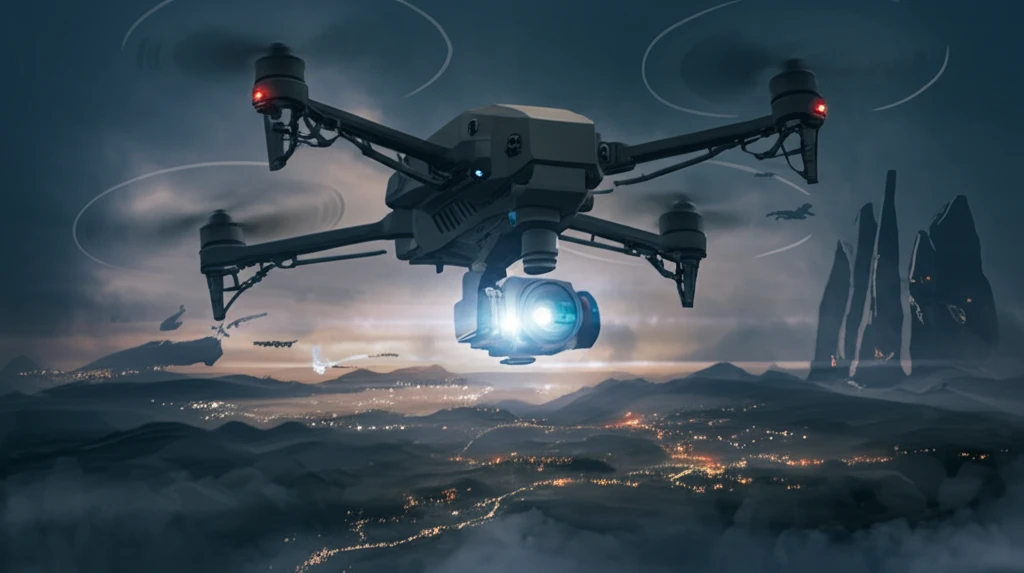
Sky High Precision: Unveiling the Secrets of Airborne Camera Stability
"Discover how advanced image motion modeling is revolutionizing aerial photography, ensuring crystal-clear imagery from above."
Aerial photogrammetry has transformed how we gather ground information, using everything from traditional airplanes to unmanned aerial vehicles (UAVs). This method relies on capturing photographic images from above, but the quest for higher accuracy has led to innovative camera technologies. Among these, the three-line-array (TLA) push-broom camera stands out for its ability to deliver three-dimensional data directly from a single pass.
Unlike traditional frame cameras that capture an entire image at once, line scan cameras, including TLA systems, build an image line by line. This approach offers unique advantages, such as higher resolution, lower costs, and more flexible image sizing along the flight path. TLA cameras, equipped with three linear CCD sensors, capture stereoscopic views simultaneously, enabling the direct recovery of exterior orientation parameters, a critical component for precise mapping.
The concept of TLA cameras, pioneered in the 1980s, has seen significant advancements. From early space shuttle missions to current airborne systems, TLA technology has evolved to meet the demands of modern photogrammetry. Systems like the Digital Photogrammetry Assembly (DPA) and the Leica ADS40 have set new standards in the field, integrating GPS and inertial measurement units (IMU) to estimate aircraft trajectory and attitude. These advancements are essential for overcoming challenges posed by atmospheric turbulence and ensuring the consistent, high-quality imagery required for accurate surveying and mapping.
Modeling Image Motion: Tackling the Turbulence

One of the biggest hurdles in airborne photogrammetry is dealing with image motion. It's all about what causes the displacement of image points on the camera's sensors due to relative movement between the camera and the ground during the exposure. There are two key culprits: the aircraft's own velocity and any instability in its attitude (pitch, roll, and yaw). Accurately modeling and compensating for this image motion is crucial for achieving high-precision results.
- Aircraft velocity creates space-invariant image motion.
- Aircraft attitude instability introduces more complex distortions.
- Pitch primarily affects along-track image motion.
- Roll and yaw significantly impact cross-track image motion.
The Future of Aerial Imagery
The ongoing development of image motion models is essential for pushing the boundaries of aerial photogrammetry. By understanding and compensating for the various factors that contribute to image distortion, we can unlock new levels of precision in mapping, surveying, and other applications. As technology advances, expect to see even more sophisticated techniques emerge, further enhancing the capabilities of airborne imaging systems.
